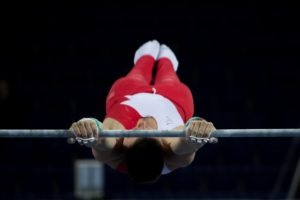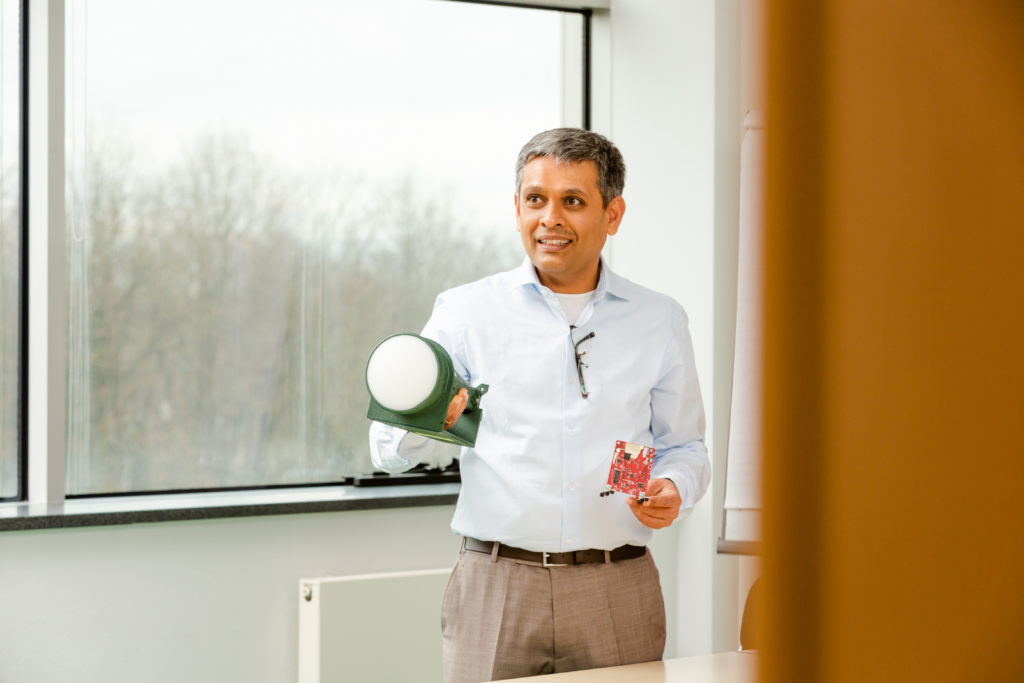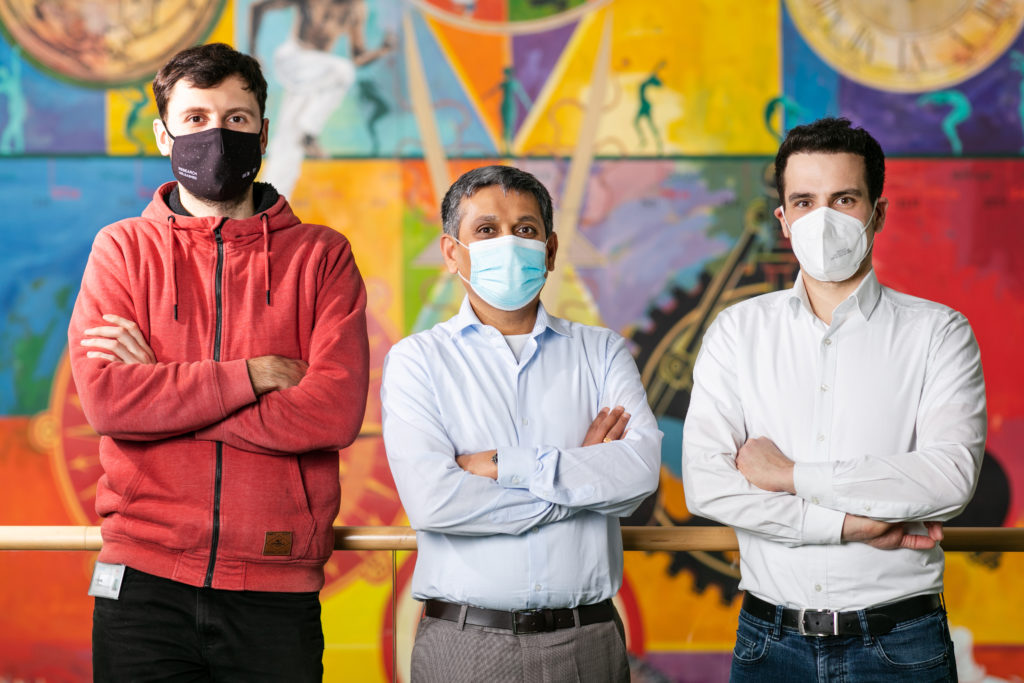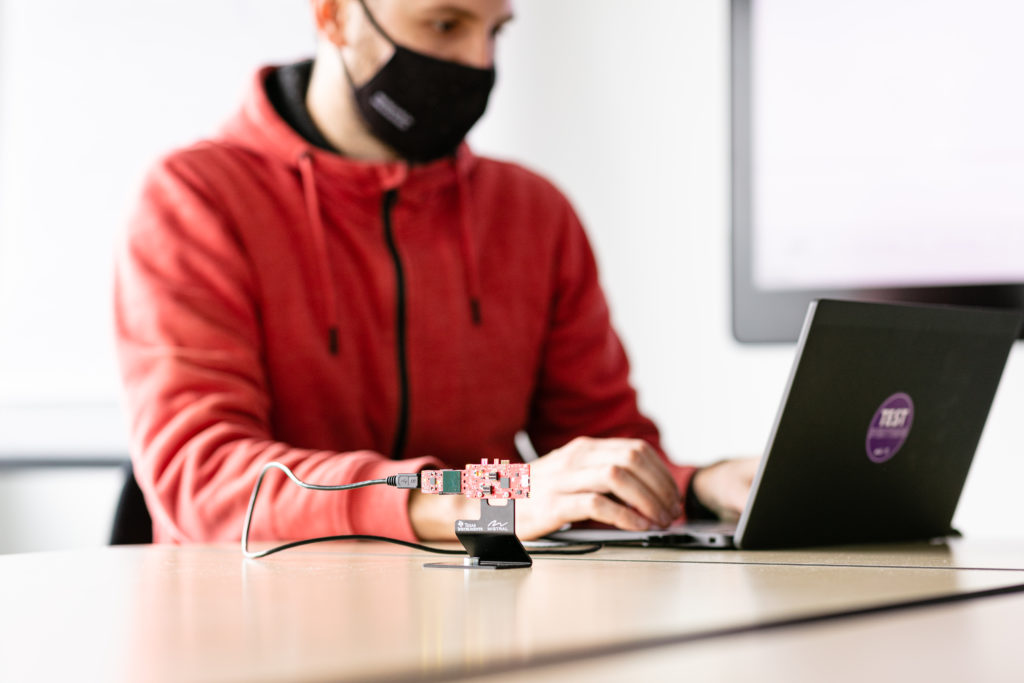
There’s an arms race going on in the world of sports — a technology arms race. Each year, new devices are introduced to sports clubs and elite athletes around the globe, which promise improved performance thanks to new insights into the athlete’s unique physiology and biomechanics. “It might sound nitpicky, but a small adjustment for a serious athlete can mean the difference between winning and losing,” says SnT former researcher and wakeboarder Dr. Christian Hammes. “More importantly, getting data about your movements can help prevent injuries. It helps bring problems to your attention before the pain of a repetitive stress issue has set in.”
Newly developed, wearable sports performance monitors can measure a lot more than just heart rate and step count — they measure the force of a limb in motion or the amount of lactic acid in a muscle. They can track an athlete’s location with GPS, and their speed with accelerometers. They even use 3D vision and sophisticated image capture technology. But there’s always a catch: the conditions need to be just right. “Many existing sensors don’t work well when the weather takes a turn for the worse. Others are complicated to set up or require consistent compliance from the athlete wearing the device,” says Hammes. “That’s not always an easy thing to secure from an entire football team, for example.
"Getting data about your movements can help prevent injuries. It helps bring problems to your attention before the pain of a repetitive stress issue has set in.”
Dr. Christian Hammes Tweet

It’s from these technological downfalls that the DREAM (Demonstration of a Radar Enabled weArable platforM) proof-of-concept (PoC) project was conceived. It builds on the innovative algorithmic and radar technologies developed in Prof. Björn Ottersten’s AGNOSTIC European Research Council (ERC) Advanced Grant project, which led to the development of a novel, high-performance radar system that would enable efficient target detection and tracking. “I saw an opportunity to build something with the radar technology that I was already helping to develop as a part of the AGNOSTIC project. In the end, I want to create a radar-enabled wearable motion capture system for athletes that is simple to set up and use anywhere and at any time.” Thanks to a 2020 ERC PoC grant, that is exactly what he is poised to do.
"Receiving an ERC PoC grant underlines the success of SnT’s approach — to focus on doing research that fuels an innovation economy."
Prof. Björn Ottersten, SnT Tweet
This new technology allows for radar and IMU (inertia) sensors to work hand in hand, merging the data and producing a motion capture and mapping system. The ERC PoC Grant gives the researchers an opportunity to explore the commercial potential of their research results. For Hammes and his team, that means applying these technological advances towards building a minimum viable product (MVP) — the first step towards a sports wearable device that will offer precise position measurements without an external reference point, providing reliable data on complex dynamic motions, all while being small and comfortable for athletes to wear.

“The award is very meaningful for the future success of the project, as it gives us 18 months to really explore the product idea,” said Dr. Shankar. “This should be enough time to have a MVP and create a business plan that Dr. Hammes is ready to realise.” With a market for sports wearable devices expected to grow to over $102 billion US by 2028, it is a niche with huge potential. “Receiving an ERC PoC grant underlines the success of SnT’s approach — to focus on doing research that fuels an innovation economy,” said Ottersten. “We encourage a spin-off culture at our research centre, and I am proud to be working with Dr. Shankar and Dr. Hammes as we continue to explore the potential of this new technology.”

The future might have even more in store for the DREAM team, as they’ve begun investigating how their technology could work as a solution in other markets as well. “The enormous potential in smart manufacturing is of so much interest that we’ve begun exploring a potential pivot in that direction,” says Dr. Hammes. “It has been really gratifying to see just how versatile the technology we developed here at SnT can be.”